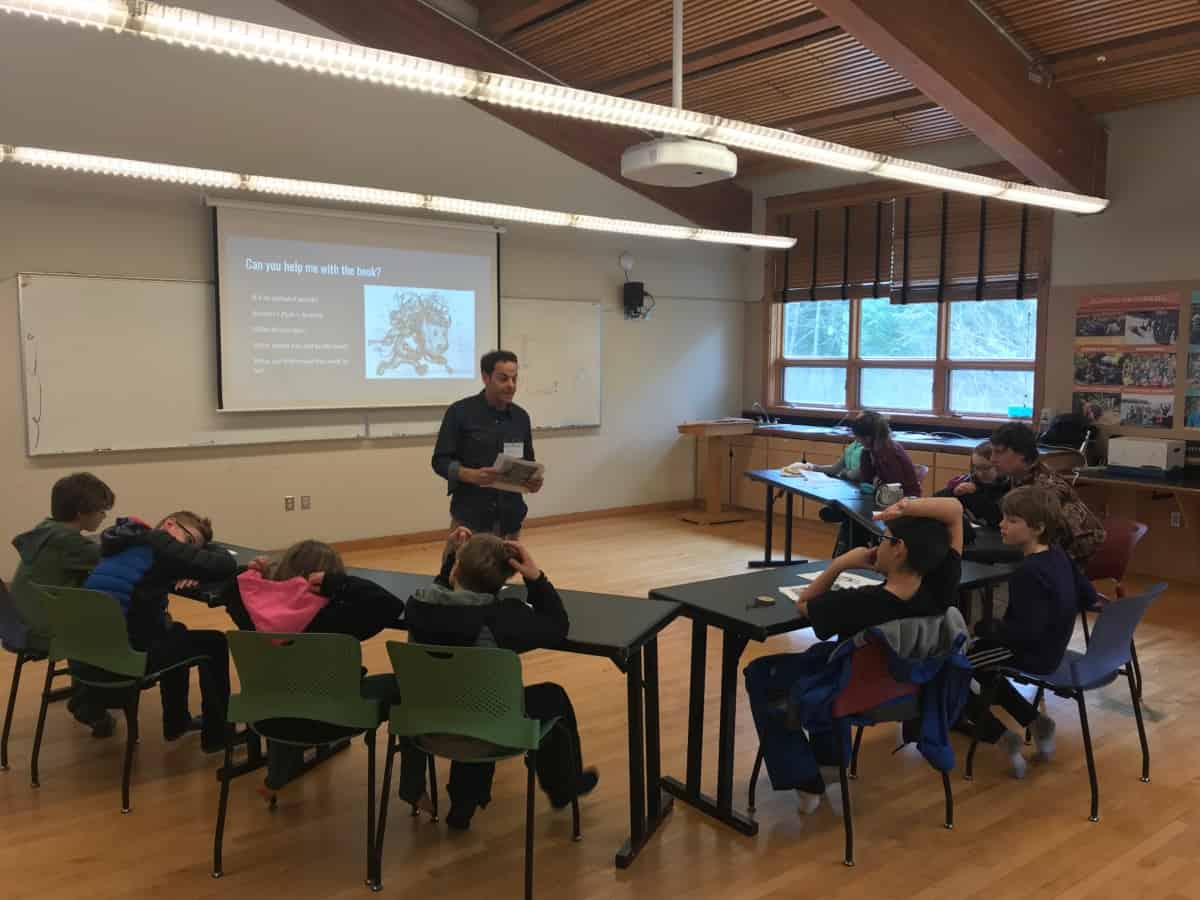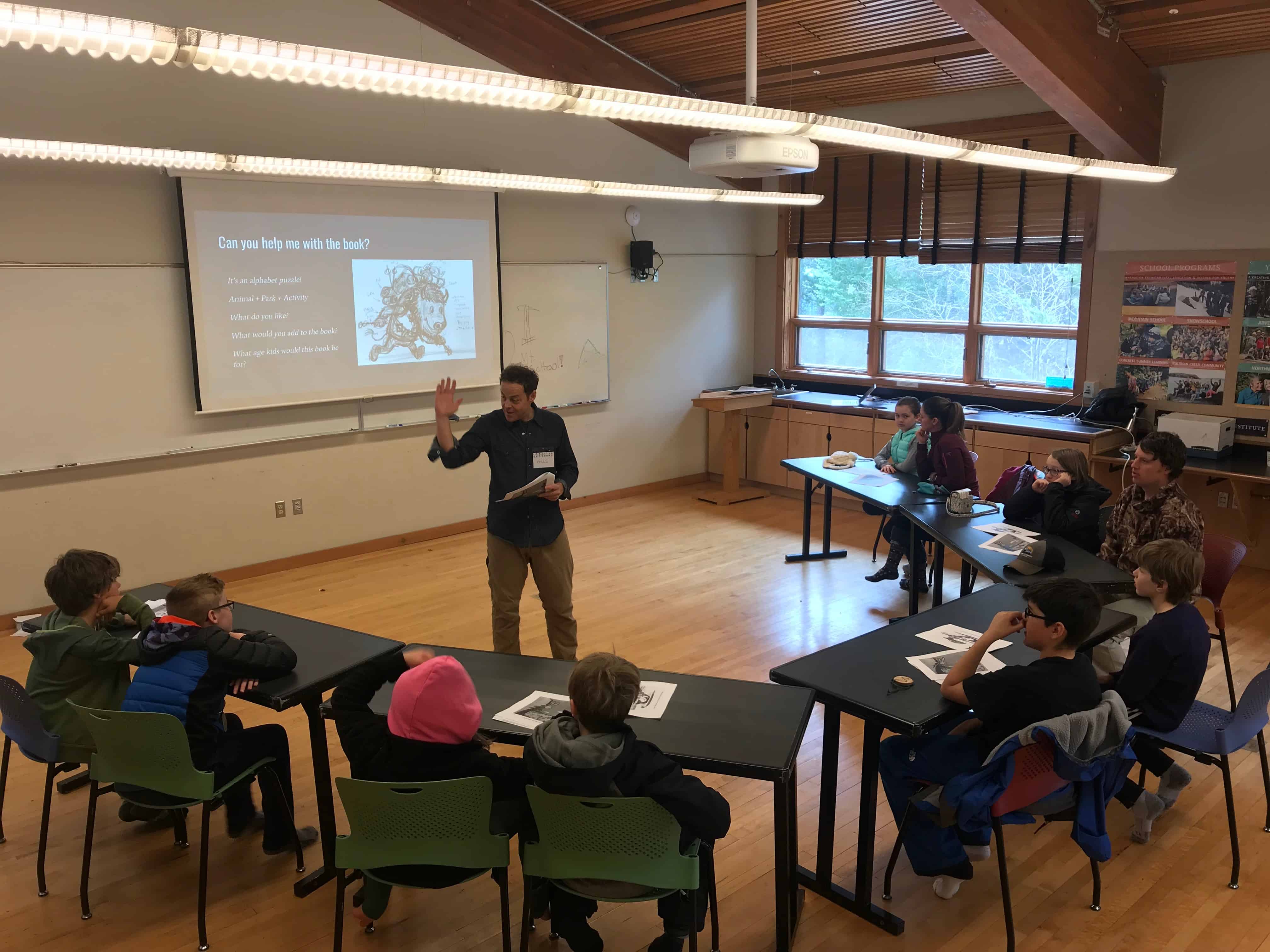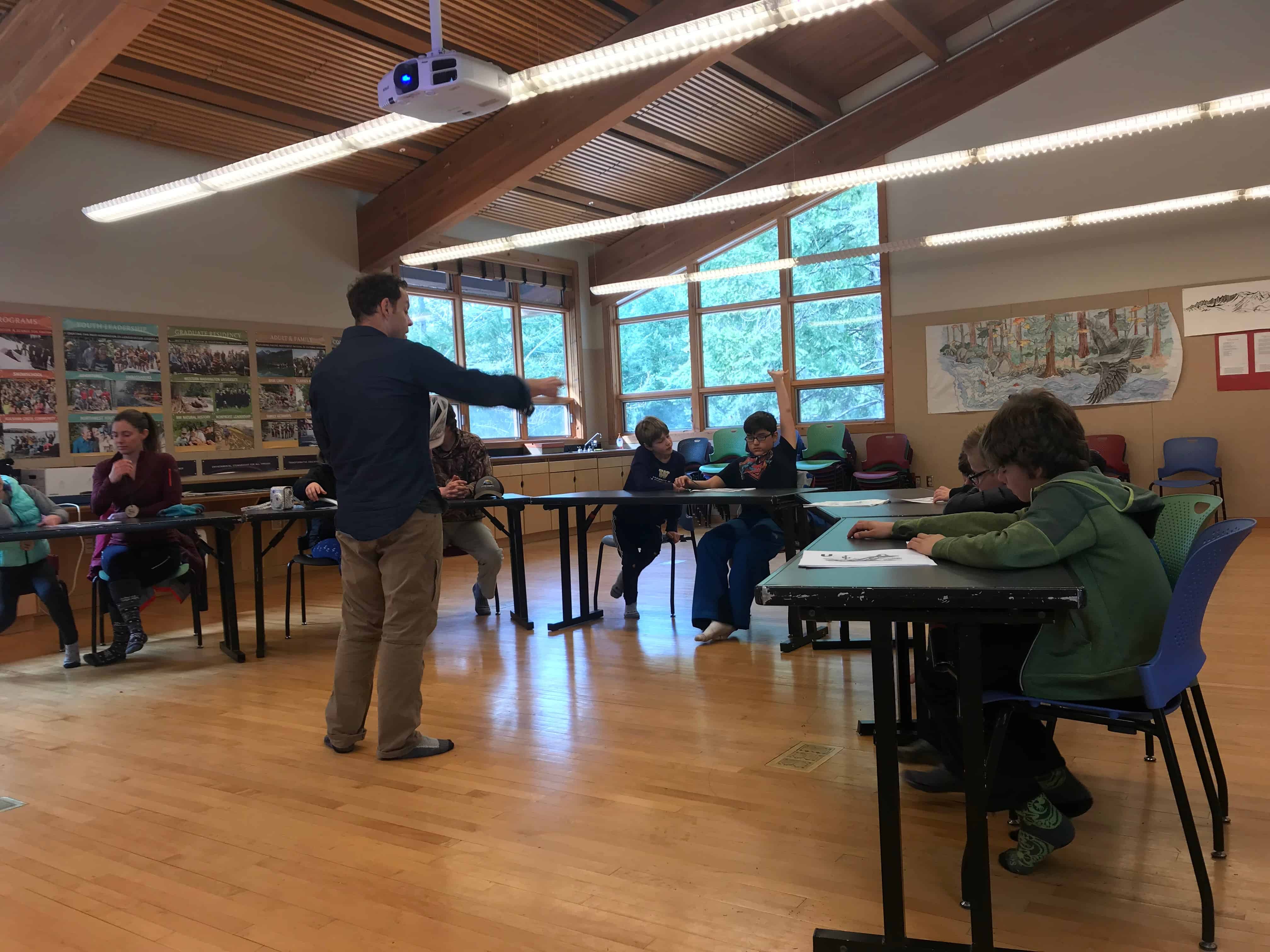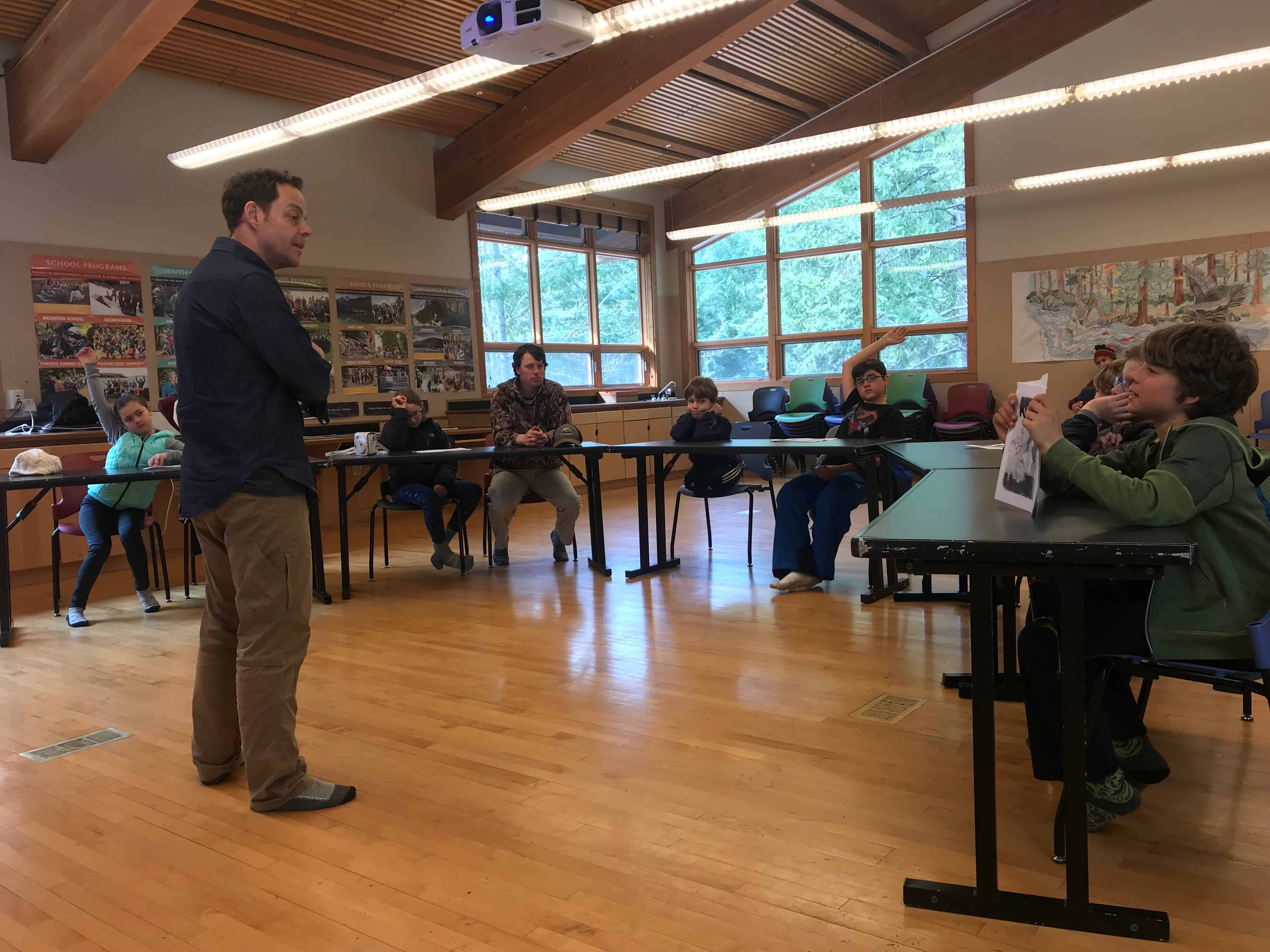
Art and Nature: A Creative Resident joins Mountain School
It is an undeniable fact that humans have long been enamored with natural beauty. Artistic expression is one of the oldest forms of documenting and paying tribute to natural landscapes that stir the sole and imagination. Indeed, it is through art that many of today’s iconic natural wonders were first brought into the public consciousness. The photography of Ansel Adams and paintings of Charlie Russel, just to name a few, immortalized the grandeur of the American West, and were largely responsible for conservation efforts to protect the last vestiges of wilderness on our continent.
The North Cascades Institute has always recognized the connection between art and the natural world, and the value of art in sharing wild places and inspiring stewardship. For many years our educational programming has included classes in watercoloring, photography, and writing that encourage participants to explore the majesty and tranquility of the North Cascades and their own creativity simultaneously. Likewise, our Creative Residence program invites artists from around the world to the Environmental Learning Center to be inspired by our surrounding landscape. Yet, our resident artists rarely have the opportunity to interact directly with the other program participants that often share space at the Learning Center. That is, until last week when creative resident Gus D’Angelo saw a perfect opportunity to enhance his current project while engaging Mountain School students in the practice of creative expression.

Gus, pictured above, is a San Francisco-based artist who creates illustrations and interactive content for news, educational, and environmental organizations and animates characters for mobile and desktop games. He also has a passion for writing and illustrating children’s literature and has come to the Environmental Learning Center to pursue work on his current project, a book about kids in the outdoors. It wasn’t long before he became aware that the other residents on campus were 5th graders from Bellingham’s Silver Beach Elementary. This created a perfect opportunity to get some feedback from his target audience while also teaching students about the joys of representing their North Cascades experience through art. What resulted was the first ever collaboration between Mountain School and the Creative Residency Program!
I had chance to ask Gus about his experience of working with students and being a guest instructor at Mountain School. Here’s some of his takeaways:
Gus: “The initial application for the residency mentioned to ‘involve the Learning Center community in your creative process’. So, I asked Evan (Holmstrom) if any youth groups would be at the Institute while I was here, and if so, did he have thoughts on how I might get their feedback on my new book. I thought an impromptu ‘editing’ session could be fun and educational for the kids and give me the opportunity to see young readers interact with my preliminary sketches. Evan proposed an activity with the Mountain School students. Being that they’re 5th graders, and within the target audience, it sounded perfect.
Mari (Schramm) then collaborated with me on a session plan to quickly introduce who I was and get the kids working interactively with the book, reading it aloud and telling me what they liked and what might they do differently. We’d end the session with the kids trying to capture in their journals – through drawings or text – their most memorable experience at Mountain School.”

Q: How did the experience go for you?
Gus:“It was fantastic. The kids were so receptive to the art and the production process. And their feedback after reading the book was direct and un-restrained! It was so helpful for me to see what parts of the book connected as I hoped, and what parts didn’t resonate as well.”
Q: Do you believe it improved the quality of your project?
Gus: “Oh yes. The commentary and suggestions from the kids (and even from their teacher/parent chaperones!) made me re-think all the text and imagery. After the session, I immediately went back to my artwork with new inspiration.”
Q: Do you believe that your contribution was valuable to the students and the overall Mountain School experience?
Gus:“I hope so! It was great to see how engaged they were throughout the session and how passionately they thought about and then tried to capture their most memorable Mountain School experience in their journals. Though, after 45 minutes, they ran out of the room pretty quick. I guess it’s hard to compete with microscope class, a snowball fight, or s’mores from the dining hall.”

Q: What surprised you about working with Mountain School?
Gus: “How engaged and energized all the kids were. They really seem to love the experience of being here. Also, how thoroughly wiped out I was after leading only five 45 minute sessions! Much, much respect to the Mountain School staff!”
Q: Do you think art and creativity have a place in Environmental Education?
Gus:
Education requires effective communication, and creative work not only can impart facts and figures but can also inspire a deep emotional connection for the subject matter.
Data such as temperature, snow level, and animal populations, are all important to know about regarding the North Cascades’ environment. But a photo, drawing, or poem that captures the deep, silent cold of the forest, or the imposing, formidable power of the snow-capped peaks, or the heart-stopping thrill of spotting a prowling lynx, can express the ‘feel’ of the North Cascades’ environment, inspiring a life-long passion for the place and reason to care.”



Your classroom looks like a classroom at Wolf Ridge along the North Shore in Minnesota.